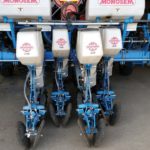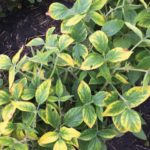
Agrifac launches the Condor Endurance II sprayer
Dutch manufacturer updates its SP sprayer with enhanced spraying ability

Managing herbicide-resistant waterhemp in Manitoba
The weed’s movement into Manitoba calls for more vigilant field scouting

Are you limiting your canola’s potential?
First, choose a yield target. Then figure out how you can get your crop there

Planting canola with precision
Researchers working to develop canola agronomy with precision planters

Manitoba soybeans not responding to K?
Soybean potassium fertility trials leave researchers scratching their heads

AAFC projects focus on aphanomyces root rot in pulse crops
Good management practices still the best way to control aphanomyces in the field

Parasitoids help control sawfly
Researchers are evaluating the value of wheat stem sawfly’s natural predators

Managing aphanomyces and root rot
2017 survey results showed a high prevalence of root rot in Prairie pulse crops

Patience pays with bertha armyworm
Experts recommend holding the spray until you scout, and counting beneficial bugs

Why was 2017 an unprecedented year for diamondback moth?
Reviewing economic thresholds and action plans to control this insect pest


